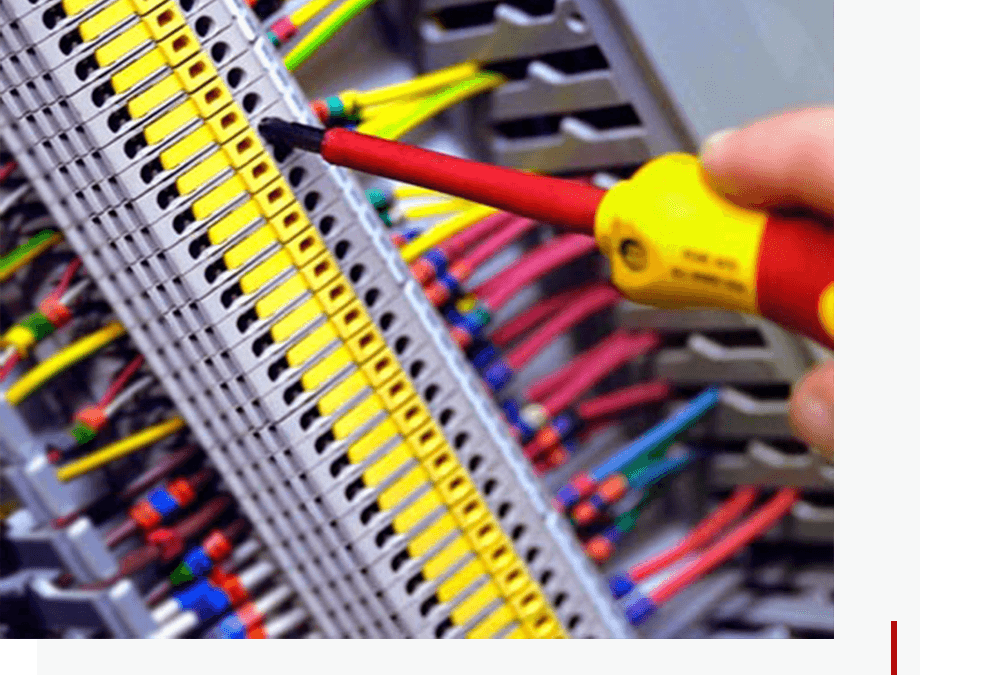When it comes to home maintenance and improvement projects, one crucial aspect that often gets overlooked is house rewiring. The electrical wiring in your home is like its circulatory system, providing power to all your appliances and lighting fixtures. Over time, this wiring can deteriorate or become outdated, posing safety hazards and inconveniences. In this comprehensive guide, we will explore the importance of house rewiring, the signs that indicate it’s time for an upgrade, the rewiring process, and the benefits it brings to your home.
The Importance of House Rewiring
House rewiring is the process of replacing the electrical wiring and components in your home. It is essential for several reasons:
- Safety: Outdated or damaged wiring can pose significant safety risks, such as electrical fires and shocks. Modern wiring systems are designed with safety in mind, with features like circuit breakers and grounded outlets.
- Compliance: Older homes may not meet current electrical codes and regulations. Rewiring ensures that your home complies with the latest safety standards, reducing the risk of code violations and potential legal issues.
- Reliability: Old wiring can lead to frequent power outages and electrical issues. Rewiring improves the reliability of your electrical system, reducing the need for costly repairs and inconvenience.
- Energy Efficiency: Newer electrical systems are more energy-efficient, helping you save on electricity bills in the long run. Energy-efficient lighting and appliances can also be integrated during the rewiring process.
- Modernization: If you live in an older home, you may have limited access to modern amenities and technologies. Rewiring allows you to upgrade your electrical system to accommodate contemporary devices and appliances.
Signs That Your Home Needs Rewiring
Knowing when it’s time to consider house rewiring is crucial for maintaining a safe and functional electrical system. Here are some common signs that indicate your home may need rewiring:
- Frequent Circuit Breaker Trips: If your circuit breakers frequently trip, it could be a sign of overloaded or faulty wiring. This can be a safety hazard and should be addressed promptly.
- Flickering Lights: Lights that constantly flicker or dim can be a result of loose or damaged wiring. It’s essential to investigate the issue to prevent electrical fires.
- Buzzing Outlets or Switches: If you hear buzzing or crackling sounds coming from your outlets or switches, it may indicate loose or deteriorating wiring. This should be checked immediately.
- Hot or Discolored Outlets: Outlets that become hot to the touch or show signs of discoloration could be a sign of electrical problems. They should be replaced and the wiring inspected.
- Outdated Wiring: If your home has knob-and-tube wiring or aluminum wiring, it’s likely outdated and may not meet modern safety standards. Upgrading to modern wiring is highly recommended.
- Burning Smell: A burning smell, especially near outlets or switches, is a serious warning sign. Turn off the power and contact an electrician immediately.
The House Rewiring Process
House rewiring is a complex and potentially disruptive process that should be carried out by a qualified electrician. Here is an overview of the typical steps involved:
- Assessment: The first step is a thorough assessment of your home’s electrical system. An electrician will inspect the wiring, outlets, switches, and the electrical panel to determine the extent of the work required.
- Planning: Based on the assessment, a rewiring plan is developed. This plan includes the type of wiring to be used, the placement of outlets and switches, and any additional electrical upgrades you may want.
- Disconnecting Power: Before any work begins, the power to your home will be disconnected to ensure the safety of the electricians and occupants.
- Removing Old Wiring: The existing wiring, outlets, and switches are removed. This can be a messy and labor-intensive process, as it may involve opening up walls and ceilings.
- Installing New Wiring: New wiring is installed throughout the house, following the rewiring plan. This includes running wires behind walls, in ceilings, and under floors to reach all the necessary locations.
- Upgrading the Electrical Panel: In some cases, upgrading the electrical panel may be necessary to accommodate the new wiring and increased electrical demands. This is typically done during the rewiring process.
- Installing New Outlets and Switches: Modern outlets and switches are installed to replace the old ones. Grounded outlets are essential for safety.
- Testing and Inspection: Once the rewiring is complete, the system is thoroughly tested to ensure everything is working correctly and safely. An inspection may be required to verify compliance with local electrical codes.
- Restoration: Any walls, ceilings, or floors that were opened up during the rewiring process are repaired and restored to their original condition. This may include patching drywall, repainting, or refinishing surfaces.
- Reconnecting Power: After all inspections and tests are passed, the power is reconnected to your home, and your electrical system is ready for use.
The Benefits of House Rewiring
Investing in house rewiring offers several benefits for homeowners:
- Enhanced Safety: Safety is the most significant advantage of house rewiring. It reduces the risk of electrical fires, shocks, and other hazards, providing peace of mind for you and your family.
- Improved Functionality: Rewiring allows you to customize your electrical system to meet your needs. You can add more outlets, upgrade to modern switches, and accommodate the latest electrical devices and appliances.
- Energy Efficiency: Modern wiring and energy-efficient lighting can help you save on electricity bills over time. Upgrading to LED lighting, for example, consumes less energy and lasts longer than traditional incandescent bulbs.
- Increased Home Value: A rewired home with a modern electrical system is more attractive to potential buyers and can increase the resale value of your property.
- Code Compliance: Rewiring ensures that your home complies with current electrical codes and regulations. This can prevent legal issues and make your home easier to sell in the future.
DIY vs. Professional House Rewiring
House rewiring is not a DIY project. It requires specialized knowledge, tools, and experience to ensure it’s done safely and correctly. Attempting to rewire your home without the necessary expertise can lead to serious accidents and code violations. It’s always recommended to hire a licensed and qualified electrician for house rewiring.
Conclusion
House rewiring is a crucial aspect of home maintenance and safety. It addresses outdated or damaged electrical wiring, ensuring the reliability and security of your electrical system. If you notice any signs of electrical problems or if your home has outdated wiring, consider contacting a professional electrician to assess your needs and discuss the possibility of house rewiring. By investing in this essential upgrade, you can enjoy a safer, more efficient, and modern electrical system in your home.


Recent Comments